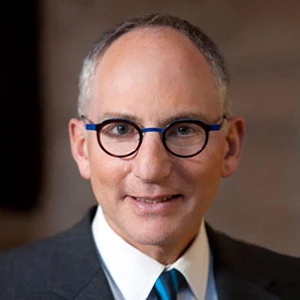For the CEO
This article was originally published in June 2017 and has been updated.
CEOs live on a nonstop treadmill. They are under constant pressure to perform and face a 24-7 spotlight of dizzying social-media attention. They are expected to take public positions on far-reaching topics and need to make sense of ever-growing volumes of information. One CEO told us that she had received some 1,000 pieces of advice during her early days as chief executive.
Corporate organizations are more complex than ever before. BCG’s “index of complicatedness” of major companies has been rising by nearly 7% per year for the past 50 years. Activist investors, public pressure, and social media are putting new challenges on CEOs.
Deep thought and reflection are casualties of this high-pressure and high-stakes environment as CEOs rush from event to event and decision to decision. Downtime is often regarded as wasted time.
CEOs who do make time to reflect, however, say that it is time well spent. It can lead to better insights about employees, consumers, customers, competitors, and position in the market. Reflection creates moments of clarity for the CEO, who can convey that clarity into an inspiring vision for their team. Reflection can bring future risks and scenarios into sharper focus, allowing the CEO more time to organize a response. And reflection can increase a CEO’s creativity and energy, which are essential for organizational momentum.
Deep thought and reflection are casualties of a high-pressure and high-stakes environment. CEOs who do make time to reflect, however, say that it is time well spent.
The most famous and successful practitioner of reflection is, perhaps, Warren Buffett, who is known to spend about five to six hours a day reading. As Charlie Munger, the late vice chairman of Berkshire Hathaway and a longtime friend of Buffet, once said about Buffett, “He has a lot of time to think. . . . You look at his schedule sometimes, and there’s a haircut. Tuesday: haircut day.” Tuesday, in other words, is a day for reflection.
Many CEOs wish they could devote more time to the activity. CEOs report spending an average of 5% to 15% of their time a week on reflection, far less than their average goal of 15% to 20%.
CEOs need to be aware of what reflection practices are personally most effective. Some CEOs free their calendars for a quarterly offsite of intensive, uninterrupted reflection. One CEO has large “blue blocks” of time set aside on her calendar to think strategically and be available to senior executives. Another imagines future scenarios for the business during “magic wand moments.” Others join a peer group of sharing and learning. Still others participate in a program of intentional reflection over six-to-nine months, meeting with a trusted advisor for multiple hours every month or so.
Many CEOs say they set aside time during travel and weekends for routine reflection. They reserve holidays and vacations for more intense reflection on a longer time horizon or about their personal legacy. No matter which path a CEO chooses, reflection done right takes discipline, practice, and structure. We explore how busy CEOs can find the time to reflect and derive the most benefit from the investment.
The Value of Reflection
Reflective thinking is thinking turned in on itself. In reflective thought, a person examines underlying assumptions and core beliefs, and questions knowledge. Unlike critical thought, which is aimed at solutions and outcomes, reflective thought enhances the framing of problems, the search for meaning, and pattern recognition. Mary Helen Immordino-Yang, a professor of education, psychology, and neuroscience at the University of Southern California, has written about the role of “constructive internal reflection” in “making meaning of new information and for distilling creative, emotionally relevant connections between complex ideas.”
Reflective thinking engages the medial prefrontal cortex, the part of the brain involved in self-referential mental activities. At rest, this region exhibits the highest metabolic activity and during goal-oriented thinking, lower levels of activity. In other words, reflective thinking and critical thinking exist at opposite ends of a digital switch. When one is “on,” the other is “off.”
Both types of thinking are important. As complexity rises and the pace of change accelerates, CEOs need to engage in critical thinking to solve immediate challenges and in reflective thinking to clarify the big picture over a longer time horizon and imagine untapped opportunities. “Every business cycle has natural moments of reflection, and moments of action. As CEO, it works the same way—moments of reflection are crucial to be able to confidently step into actions needed to shape and guide the organization” over multiple time horizons, one CEO told us.
The Roadblocks to Reflection
A 2018 Harvard Business Review study showed that CEOs spend an average 72% of their time in meetings, most of it in spurts of an hour or less, creating a fragmented schedule for urgent tasks, email, travel, and interactions.
This activity has a cognitive cost. The human brain has natural limits in its ability to pay attention, remember, and process information. Multitasking breaches those limits faster than singular activities. One of the big challenges for CEOs is breaking away from business—the necessary formalities of being CEO—to reflect. CEOs cannot lead monastic lives, but they can learn to be intentional and disciplined about engaging in deep thought.
Three Rules of Reflection
Our advisory work with CEOs has shown that three factors facilitate insightful reflection.
A Structure and a Schedule. Unstructured and unguided thought tends to dwell on immediate worries and familiar conundrums rather than fundamental and foundational issues. Thought focused on solving immediate problems is critical—not reflective—thought. Reflective thought sets the stage for long-term success. Time for reflection should be regularly scheduled and protected on the CEO’s calendar. Thirty minutes is not enough. Set aside at least 90 minutes—ideally, weekly or monthly, but quarterly is better than not at all.
Reflection should occur in a place where the CEO can disconnect and relax and be free of interruptions. Many CEOs find time on Friday afternoons, after work, or on holidays and vacations.
One CEO designed his own quarterly offsite for two days and one night, away from both office and home. He intermixed physical activities, relaxation, reflection, and learning. He also connected with peers outside of his industry.
CEOs can learn how to reflect on their own. Many of those we work with have acquired the foundational habits and practices of reflective thought in as little as 15 hours of facilitated practice.
Once CEOs learn the skill, they can practice on their own or with somebody they trust.
More than 400 CEOs and executives have gone through BCG’s CEO Advisory program, which is tailored to individual needs. To help CEOs establish the foundation for reflection, we lead them through a series of integrated questions on strategy, organization, leadership, and personal vision. See “Ten Questions CEOs Should Ask.”
Ten Questions CEOs Should Ask
- Are there underlying patterns within your company or industry that are rarely acknowledged or not well understood?
- When have you had a clarifying moment after talking to a consumer, customer, competitor, or front-line employee?
- What bold vision or ideas have you insufficiently considered?
- What new business models from outside your industry intrigue you?
- What could go very wrong for the enterprise, and how and when would you know?
- If you could start with a blank slate, how would you describe the ideal culture of your organization? How does that ideal compare with reality?
- Is your best talent aligned with the critical roles and capabilities that will generate outsized returns?
- Do you have executives who can constructively challenge you and your leaders?
- Are you spending your time as you intended to amplify your impact?
- What are the unstated and less refined ambitions and dreams—both personal and professional—that you would like to achieve?
A Trusted Dialogue Partner. As leaders, many CEOs face the pressure to maintain consistency. In front of their people, CEOs need to project confidence, optimism, and conviction. In public—and even with their most senior executives—they rarely exhibit signs of self-doubt, admit uncertainty, waffle, or question core beliefs. Scrutiny in social media amplifies this tendency toward stoicism balanced carefully with today’s demands for authenticity in senior leaders.
Reflection, on the other hand, requires introspection and vulnerability that are difficult for CEOs to convey in their day-to-day activities and interactions. Even unreserved CEOs worry that exploring and processing out loud has the unintended consequences of creating confusion, misalignment, unintended investment, or wasted activity. Having spent their careers hitting targets and achieving other outward signs of success, CEOs themselves may be uncomfortable reflecting in public or in front of even a small number of senior executives.
To inspire and refine objective, reflective thought , a CEO can benefit from conversations with a trusted individual who is deeply steeped in the industry and with whom the CEO is comfortable being frank and open. An effective dialogue partner needs both counseling skills and knowledge of the CEO’s industry and organizational context: the partner’s constructive challenges must be grounded in the CEO’s specific situation. The partner and the CEO can flip back and forth between the big picture and the details, surfacing links among strategy, organization, and leadership topics. In other words, an effective dialogue partner can mirror the CEO’s thinking. The partner should not make recommendations but stay focused on framing, observing, and constructively challenging.
This combination of content and counseling ensures that the reflection ultimately informs value creation.
Ideally, reflection should be codified into hard and soft benefits.
- The hard benefits of reflection may be the creation of a strategic narrative with a longer time horizon than the enterprise’s strategy or current plan. Other hard benefits may include the creation of an investor or stakeholder narrative; an analysis of a CEO’s calendar; or the development of a personal action plan for intended future uses of time.
- The soft benefits may include a commitment to work on an intentional leadership style and the development of a personal learning agenda. Other soft benefits of reflection may be a better understanding of sources of strategic input, the motivations and influence of various stakeholder and leaders, and ways to energize and inspire the organization.
A Catalytic Conversation. Many executives and other stakeholders who meet with the CEO want to focus on their own agenda or execute the CEO’s agenda . These conversations are a critical part of corporate life but unlikely to lead to reflective thought.
Dialogue partners bring an entirely different mindset and set of materials to their discussions with CEOs. Leaders benefit from new and unbiased information that can stimulate and catalyze their thinking. By having an independent relationship with a CEO, a dialogue partner can provide perspectives that otherwise are unlikely to be aired. These may include examples of disruptions or pivotal leadership decisions in other companies or industries; scenarios that ground thinking in the past, present, and future; and frameworks that challenge conventional thinking and ways of working. “It’s about making high-quality conversations and opportunities for reflection a part of my life,” one leader said, at the conclusion of our work with him.
The Clarity of Reflection
Reflection is anything but passive. It leads to insight, action, engagement, and emotional commitment. CEOs confirm that the time spent reflecting on their business and organization produces positive results. In our work with CEOs, the insights that they have generated during reflective thought form the basis of a 12- to 18-month personal action plan with quarterly commitments built into their calendars.
CEOs say that structured reflection helps them make bold moves, anticipate crises such as proxy fights, and establish the sequence and pace for delivering the most value. “I feel good about this course of action because I’ve really thought it through,” one CEO told us.
Reflection is anything but passive. It leads to insight, action, engagement, and emotional commitment.
Several CEOs described the utility of having a personal strategic enterprise narrative across multiple time horizons that is related to the current strategy and plan but distinctively the CEO’s. These strategic narratives link back to purpose and vision, cover the strategic “what,” and clearly link to the “how.” They have declarative statements about what financial, operational, cultural, and behavioral success looks like. These CEOs speak about using this personal strategic narrative as an ongoing tool to evaluate their team’s consensus, the CEO’s conviction, and organizational pace.
On a personal level, CEOs have told us that structured reflection has helped them manage the demands of the job more effectively by allocating time and energy more selectively. “In the past,” one CEO said, “I was more operationally focused. This CEO role gives me the opportunity to be more strategic and visionary. I need to think and allocate time differently to change.”
During a CEO’s typical day, finding time to reflect can be challenging, but the effort is worthwhile. It’s not possible to reflect in 15-minute increments, and it’s not productive to reflect and then forget the insights that were generated. According to one CEO, structured reflection “has been driving what we have been doing in the corporation as a whole.”
The reflective CEO is a productive CEO who both imagines and executes rewarding strategies.
Leadership by Design: Navigate the complexities of today’s leadership and management environment.
BCG’s CEO Advisory
BCG’s CEO Advisory supports the success of current and prospective CEOs through individual guided self-reflection and counsel as well as the convening of peer forums.










